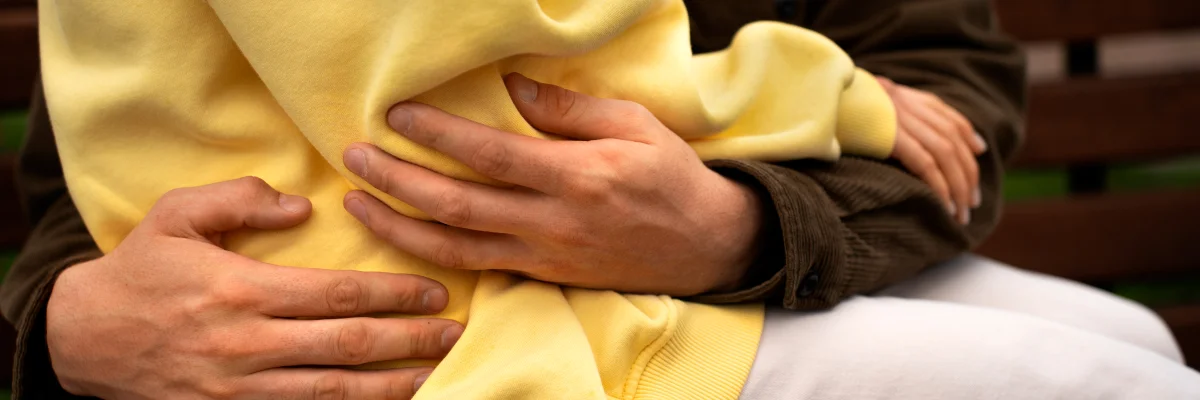
Attachment Styles: Impact on Adult Relationships and Emotional Bonds
In this comprehensive exploration of attachment styles, our focus will delve into the intricate facets of attachment style types, shedding light on the defining characteristics of secure, avoidant, ambivalent, and disorganized attachments. We will examine the impact of attachment styles on relationships, revealing the profound implications of early emotional connections on interpersonal, social, and emotional dynamics throughout life. We will also provide in-depth tips for promoting healthy relationships, offering practical guidance on creating environments that nurture secure attachments, including insights from attachment theory, and contribute to the overall well-being of individuals within various relationship contexts.
What is Attachment? Exploring Emotional Bonds

Attachment is a key concept in psychology that describes the emotional connection that occurs between a person and an attachment figure, usually a parent or caregiver. This connection provides a secure foundation for a person and has a significant impact on his psychological development and future relationships.
Types of Attachment Styles

Secure Attachment
Description: A secure attachment style develops when a child feels loved and supported by the attachment figure and is therefore able to explore the world with confidence.
Impact on relationships: Adults with secure attachment tend to have positive, stable relationships, trusting others and feeling comfortable with intimacy.
Key characteristics:
- Individuals with a secure attachment style trust that their caregivers will be available and responsive when needed. This trust fosters a sense of confidence and security in relationships.
- Securely attached individuals feel comfortable exploring their environment and forming relationships because they have a secure base in their caregivers. They are confident in their ability to seek support when necessary.
- People with secure attachment can regulate their emotions effectively. They are less likely to experience extreme emotional highs or lows and can manage stress and anxiety more adaptively.
- They can balance independence with the ability to form close, meaningful relationships.
- Secure attachment contributes to the development of positive self-esteem. The consistent support and responsiveness from caregivers help individuals see themselves as worthy of love and care.
- Securely attached individuals have a healthy sense of boundaries. They can establish and respect personal boundaries in relationships, fostering mutual respect and understanding.
- People with secure attachment style generally have a positive outlook on relationships. They expect that relationships will be fulfilling and trustworthy, contributing to the success and longevity of their connections with others.
Avoidant Attachment
Description: An avoidant attachment style develops when the child perceives the attachment figure as unavailable or unreliable and therefore tends to avoid emotional intimacy.
Impact on relationships: Adults with avoidant attachment may struggle with intimacy, keeping emotional distance in relationships.
Key characteristics:
- Avoidantly attached individuals tend to keep emotional distance from others. They may suppress or downplay their emotions and avoid expressing vulnerability or dependency.
- There is a fear of intimacy and closeness in avoidant attachment. Individuals with this style may feel uncomfortable with emotional intimacy and may prioritize independence over connection.
- People with avoidant attachment value self-reliance and independence. They may prefer to solve problems on their own and be hesitant to seek support from others.
- Avoidantly attached individuals may have difficulty trusting others. This mistrust can stem from past experiences where caregivers were inconsistent or unavailable in responding to their needs.
- Expressing emotions, especially vulnerable or deep emotions, can be uncomfortable for those with avoidant attachment.
- When faced with emotional challenges or conflicts, those with avoidant attachment may tend to withdraw or distance themselves rather than engaging in open communication or seeking resolution.
Anxious Attachment
Description: An anxious attachment style develops when the child does not understand whether he or she has an attachment figure, and therefore alternates between needing support and resistance to intimacy.
Impact on relationships: Adults with anxious attachment may have difficulty trusting others, fear rejection, and may exhibit emotional highs and lows in relationships.
Key characteristics:
- Individuals with an anxious attachment style often harbor a deep-seated fear of abandonment. They may be highly attuned to signs of potential rejection and may become anxious or distressed when they perceive a threat to the relationship.
- People with anxious or ambivalent attachment often seek reassurance from their attachment figures to alleviate their fears. They may crave constant affirmation and may be preoccupied with thoughts of the relationship’s stability.
- Individuals with an anxious attachment style may experience heightened emotional responses, oscillating between extremes of happiness and distress based on the perceived security or insecurity of the relationship.
- There can be a persistent concern about one’s own worthiness and desirability, leading to a heightened sensitivity to perceived rejection or criticism.
- Anxiously attached people may exhibit a tendency to become overly dependent on their attachment figures, seeking closeness and reassurance to alleviate their anxieties.
Disorganized Attachment
Description: A disorganized attachment style develops in situations of abuse or neglect, creating emotional confusion and a lack of healthy coping strategies.
Impact on relationships: Adults with disorganized attachment may face challenges in forming and maintaining healthy relationships, exhibiting unpredictable behaviors.
Key characteristics:
- People with disorganized attachment style may exhibit erratic and unpredictable behavior, often switching between conflicting coping strategies or seeking intimacy and avoiding the attached person in rapid succession.
- Disorganized attachment often hides underlying feelings of fear and confusion. This may be the result of abuse, neglect, or inconsistent care, resulting in a lack of clear and stable attachment strategies.
- In some cases, children with disorganized or insecure attachment may demonstrate role reversals where they may take responsibility for caring for their attachment figures. This inversion can create confusion and disrupt the typical roles of parents and children.
- Lack of a consistent and secure base may prevent them from trusting others or establishing predictable patterns of relationships.
- Disorganized attachment is often characterized by emotional confusion. People may have difficulty regulating their emotions effectively and may exhibit strong emotional reactions that seem out of proportion to the situation.
Unlike people with other attachment styles, who may use consistent strategies during times of stress (such as comfort seeking or intimacy avoidance), people with disorganized or insecure attachment style lack clear and effective coping strategies. This may contribute to feelings of emotional turmoil.
Impact of Attachment Styles on Relationships

The impact of attachment styles on relationships is a fundamental aspect of psychological research. Longitudinal studies consistently highlight that childhood attachment significantly shapes an individual’s future relationships, influencing their success in interpersonal, social and emotional areas.
Particularly noteworthy is the correlation between a secure attachment in childhood and a greater ability to regulate emotions, combined with a lower likelihood of experiencing mental disorders in adulthood. Understanding these dynamics can offer valuable insights into the complexity of human connections and help promote healthier relationships.
Tips for fostering Healthy Relationships

- Safety and empathy.
Provide a safe and empathetic environment for the people you interact with, especially children. The feeling of security promotes the development of a secure attachment.
- Consistency and reliability.
Be consistent and reliable in your behaviors and responses. This helps build trust and promote a secure attachment.
- Respond to needs.
Pay attention to the needs of people around you, especially children. Responding promptly to physical and emotional needs contributes to the development of a secure attachment.
- Open communication.
Encourage open and clear communication. This is crucial in all relationships, both with children and adults.
- Development of routines.
Daily routines can provide structure and predictability that are important for children and can contribute to secure attachment.
- Flexibility and adaptability.
Be flexible and adaptable in your interactions. Each person is unique, and relationships benefit from the ability to adapt to individual changes and needs.
- Active listening.
Practice active listening to truly understand others and respond meaningfully to their emotional needs.
- Promote independence.
While it is important to offer support, it is equally essential to encourage independence. This helps develop a secure base from which to explore the world.
- Self-care.
Take care of yourself to be able to offer the best to others. Healthy relationships are based on healthy, balanced individuals.
- Unconditional acceptance.
Accept others for who they are, without judgment or conditions. Unconditional acceptance contributes to secure attachment.
Conclusion

Our exploration of types of attachment styles provides a deep understanding of how early emotional bonds shape adult relationships. Analyzing secure, avoidant, anxious, and disorganized attachments reveals the intricate interplay influencing interpersonal, social, and emotional dynamics. Longitudinal studies underscore the lasting impact of childhood attachment on adult relationship success. Beyond observation, we offer practical tips for fostering healthy relationships-creating safe environments, promoting independence, and practicing active listening. These insights guide the cultivation of secure attachments, emphasizing the practical pursuit of healthier relationships grounded in empathy, understanding, and a commitment to positive emotional connections.











